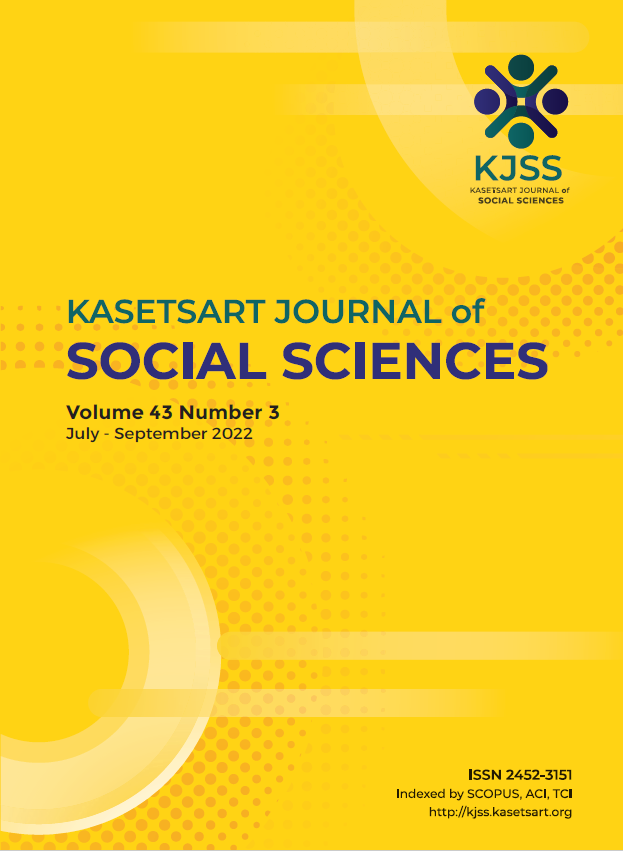A causal model of learning outcomes and job ability of Thai university students educated under the communication arts curriculum in digital era
Keywords:
communication arts curriculum, learning outcomes, job abilityAbstract
A causal model of learning outcomes and job ability of Thai university students educated under the Communication Arts curriculum in Digital era was developed. The quantitative data were collected from students studying in year 1 and year 3 of the bachelor’s degree in Communication Arts from Thai universities in the northern, central, northeastern, and southern prefectures. Samples were selected using stratified random sampling technique, and they represented a total of 696 samples from 12 universities. The research instrument was in the form of questionnaire and SEM was used for the analysis to validate the causal model. The exogenous latent variables were: (1) self-efficacy; and (2) teaching quality, and campus experience. The endogenous latent variables were: (1) learning outcomes; (2) job ability; (3) learning motivation; and (4) learning strategies. Results indicated that the hypothetical causal model was consistent with the empirical data with χ2 = 17.501, df = 10, p = 0.064, RMSEA = 0.029, GFI = 0.997, AGFI = 0.973, CFI = 1.00, RMR = 0.004, and SRMR 0.009. Job ability was directly affected by the highest learning outcomes with a positive influence coefficient of 0.49. Self-efficacy had the highest total effect on the job ability, learning outcomes, and learning motivation with a positive influence coefficient of 0.68, 0.57, and 0.71 respectively while learning motivation had the highest total effect on the learning strategy with a positive influence coefficient of 0.73. These causal factors can commonly explain 77.8 percent of variance in job ability and 74.7 percent of variance in learning outcomes.
Downloads
Published
How to Cite
Issue
Section
License

This work is licensed under a Creative Commons Attribution-NonCommercial-NoDerivatives 4.0 International License.
This is an open access article under the CC BY-NC-ND license http://creativecommons.org/licenses/by-nc-nd/4.0/










